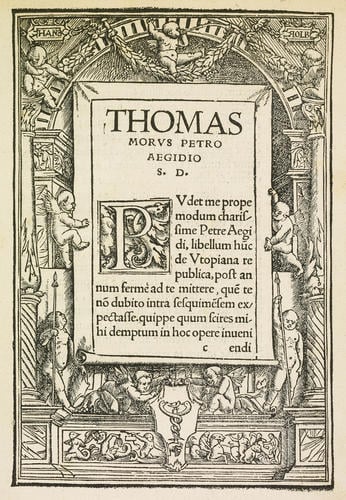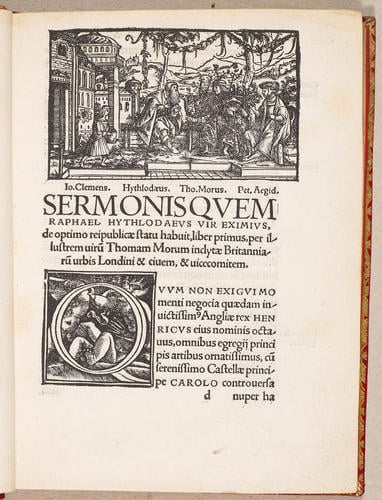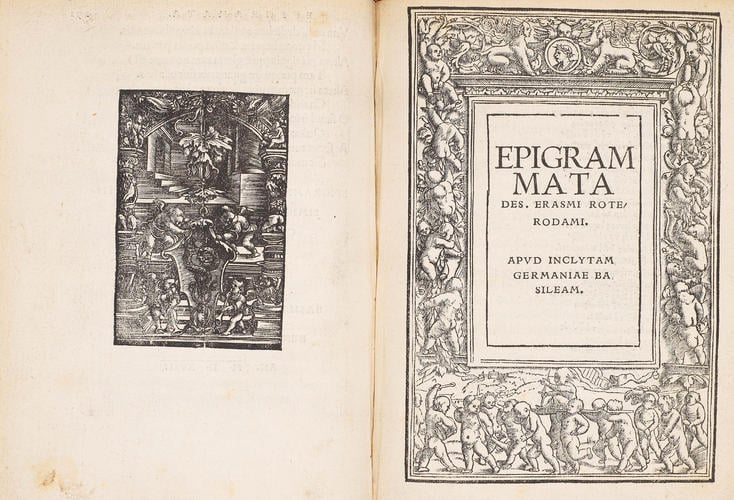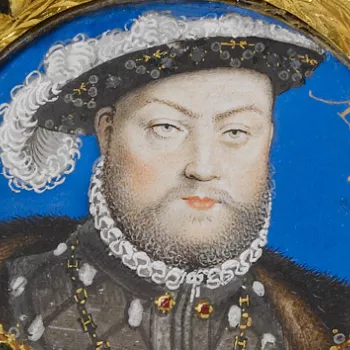Utopia 1518
Printed book with woodcut illustrations | 21.0 x 30.5 cm (open) (book measurement (conservation)) | RCIN 1086970

Sir Thomas More (1478-1535)
De Optimo reip. statu, deque nova insula Utopia ; Epigrammata / T. Mori Epigrammata Des. Erasmi Roterodami 1518

Sir Thomas More (1478-1535)
De Optimo reip. statu, deque nova insula Utopia ; Epigrammata / T. Mori Epigrammata Des. Erasmi Roterodami 1518

Sir Thomas More (1478-1535)
De Optimo reip. statu, deque nova insula Utopia ; Epigrammata / T. Mori Epigrammata Des. Erasmi Roterodami 1518

Sir Thomas More (1478-1535)
De Optimo reip. statu, deque nova insula Utopia ; Epigrammata / T. Mori Epigrammata Des. Erasmi Roterodami 1518

Sir Thomas More (1478-1535)
De Optimo reip. statu, deque nova insula Utopia ; Epigrammata / T. Mori Epigrammata Des. Erasmi Roterodami 1518

Sir Thomas More (1478-1535)
De Optimo reip. statu, deque nova insula Utopia ; Epigrammata / T. Mori Epigrammata Des. Erasmi Roterodami 1518







-
Utopia (from the Greek ou topos, meaning 'no place'), as it is usually named, is Thomas More's best-known written work. It depicts the society of a fictional island and its religious, political and social customs. More used the work as an indirect method of commenting on the political and social ideas of the day, as well as satirising some of the failings that he saw around him. It contains two books, commencing with the Dialogue of Counsel, correspondence between More and others, including Pieter Gillis (1486-1533), Latinised as Petrus Aegidius, who was a humanist and printer in Antwerp. It also introduces the traveller Raphael Hythloday as the main source for the island of Utopia, which is described in detail in Book II. The work was conceived while More was staying with Gillis in Antwerp in mid-1515, and completed on More's return to England in 1516. The first edition, edited by Erasmus, was published in Leuven in 1516, followed by a second edition in Paris in 1517, embellished with supportive letters between leading humanists to whom Erasmus had sent copies of the manuscript. This third edition was published (after some revisions by More) in Basel by Johannes Froben, Erasmus's printer of choice, with woodcut borders designed by Hans Holbein. Froben had originally worked in Nuremberg, before coming to Basel in 1490 where he worked in the printing workshop of Johannes Amerbach (c.1440-1513). He produced his own editions from mid-1491 and concentrated his efforts on producing scholarly editions with fine, careful presswork, on the model of the Venetian master printer Aldus Manutius (he even used typefaces modelled on Aldus's own). A fine reprint by Froben of Aldus's edition of Erasmus's Adagia in 1513 brought the humanist and the printer together, Erasmus remaining as a guest in Froben's house for well over a year thereafter, and the partnership was sealed.
This border (the earliest border designed by Holbein for Froben) had originally been used for earlier Froben publications in 1516-17, and was reused for the publication of the third edition of Utopia. Holbein's border is signed top left and right, 'HANS HOLB' in cartouches, and takes the form of a Renaissance niche flanked by columns in which putti play around a sheet of paper containing the text. At the base of the text panel two putti support a shield showing Froben's printer's mark, a hand holding a caduceus (a rod wound round with two snakes) with a bird perched on top. The design was used both for the title page and for a letter to Pieter Gillis, to whom More dedicated the work. Holbein's brother Ambrosius (c.1494-c.1519) designed the alphabet letter within the text.
Utopia was a publishing success, going through several editions into the 1520s, with translations into German in 1524. There publication seems to have stopped; Utopia was More's last publication in a humanist mode, since his subsequent works were theological or polemical, against Luther and his followers. A translation into his own language, English, had to wait until 1551, some time after his execution.
Catalogue entry adapted from The Northern Renaissance. Dürer to Holbein, London 2011.Provenance
Purchased by Queen Victoria; probably in the Royal Library by 1860. Bears the bookplate of Queen Victoria, used 1863-1901.
-
Creator(s)
(publisher)Acquirer(s)
-
Medium and techniques
Printed book with woodcut illustrations
Measurements
21.0 x 30.5 cm (open) (book measurement (conservation))
21 cm (Height) x 30.5 cm (Depth) (open) (book measurement (inventory))
Alternative title(s)
De Optimo reip. statu, deque nova insula Utopia ; Epigrammata / T. Mori Epigrammata Des. Erasmi Roterodami.
Place of Production
Basel [Switzerland]









